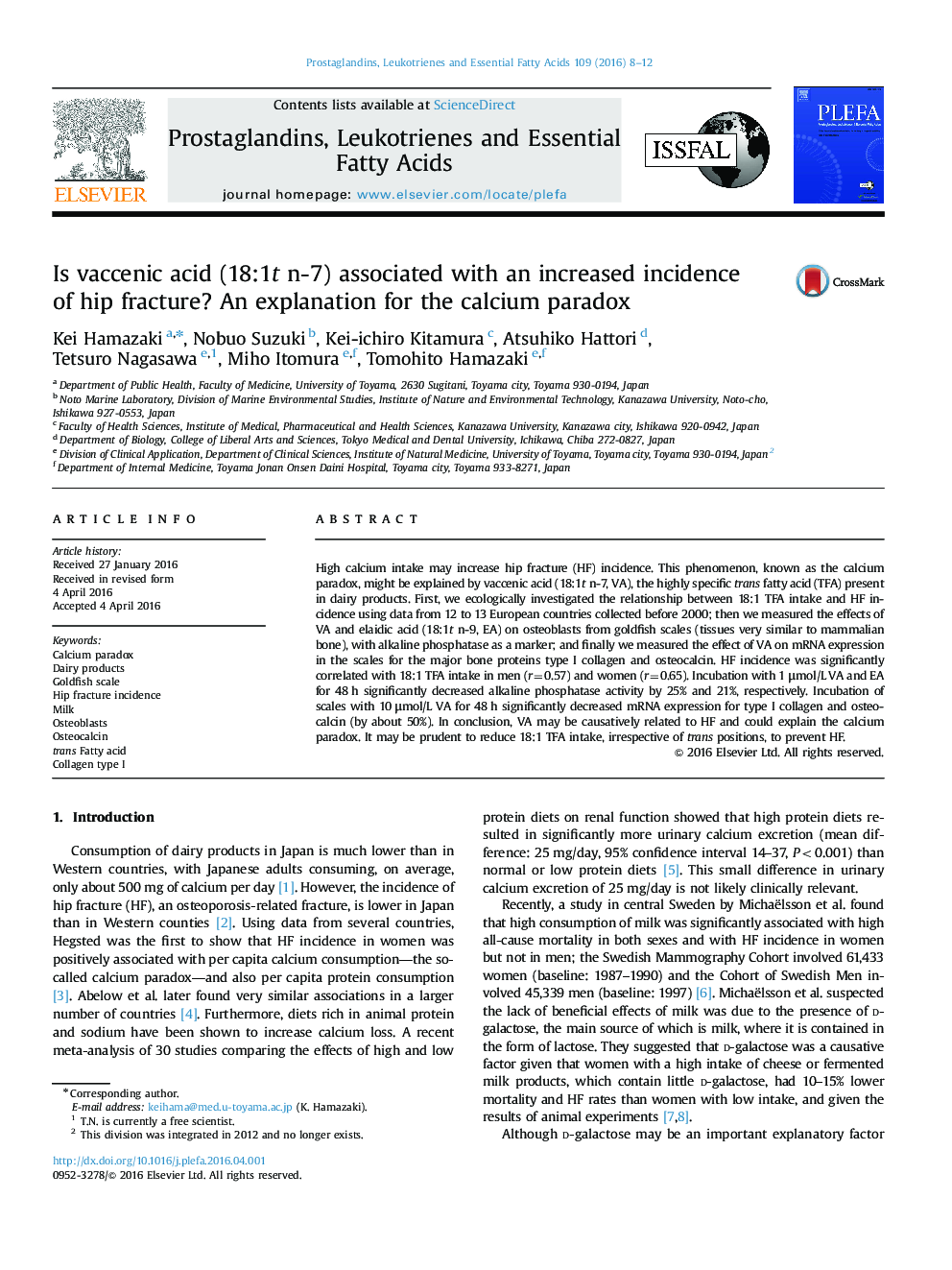| Article ID | Journal | Published Year | Pages | File Type |
|---|---|---|---|---|
| 5888410 | Prostaglandins, Leukotrienes and Essential Fatty Acids (PLEFA) | 2016 | 5 Pages |
Abstract
High calcium intake may increase hip fracture (HF) incidence. This phenomenon, known as the calcium paradox, might be explained by vaccenic acid (18:1t n-7, VA), the highly specific trans fatty acid (TFA) present in dairy products. First, we ecologically investigated the relationship between 18:1 TFA intake and HF incidence using data from 12 to 13 European countries collected before 2000; then we measured the effects of VA and elaidic acid (18:1t n-9, EA) on osteoblasts from goldfish scales (tissues very similar to mammalian bone), with alkaline phosphatase as a marker; and finally we measured the effect of VA on mRNA expression in the scales for the major bone proteins type I collagen and osteocalcin. HF incidence was significantly correlated with 18:1 TFA intake in men (r=0.57) and women (r=0.65). Incubation with 1 μmol/L VA and EA for 48 h significantly decreased alkaline phosphatase activity by 25% and 21%, respectively. Incubation of scales with 10 μmol/L VA for 48 h significantly decreased mRNA expression for type I collagen and osteocalcin (by about 50%). In conclusion, VA may be causatively related to HF and could explain the calcium paradox. It may be prudent to reduce 18:1 TFA intake, irrespective of trans positions, to prevent HF.
Related Topics
Life Sciences
Biochemistry, Genetics and Molecular Biology
Clinical Biochemistry
Authors
Kei Hamazaki, Nobuo Suzuki, Kei-ichiro Kitamura, Atsuhiko Hattori, Tetsuro Nagasawa, Miho Itomura, Tomohito Hamazaki,
